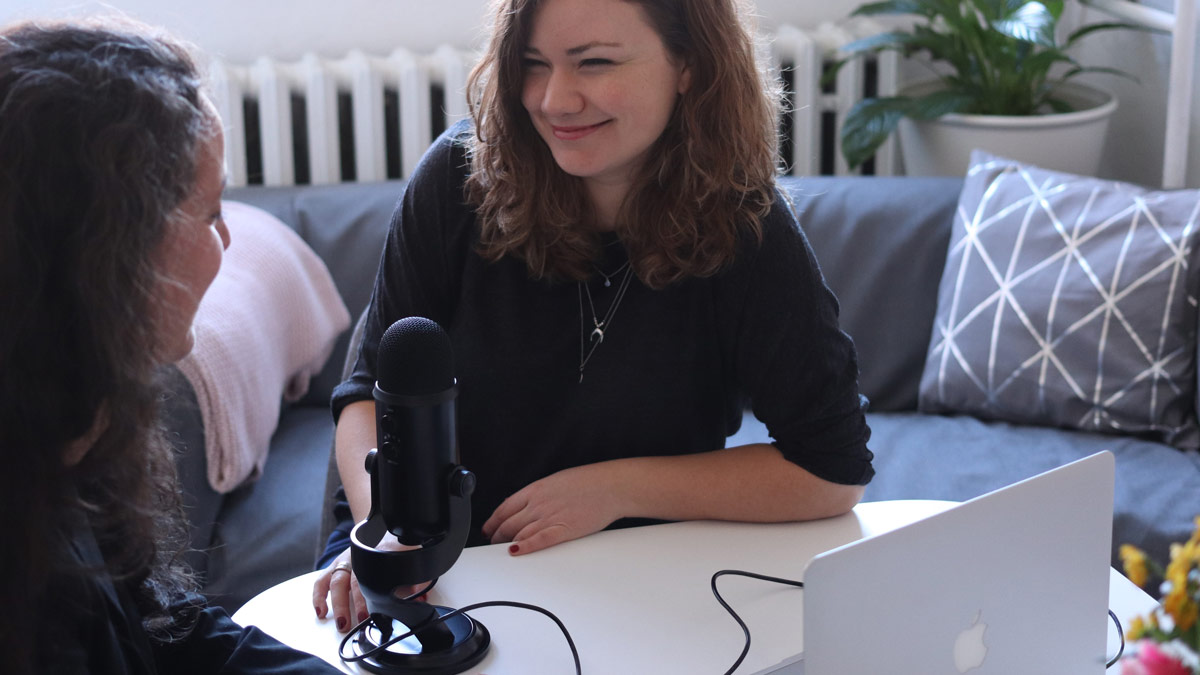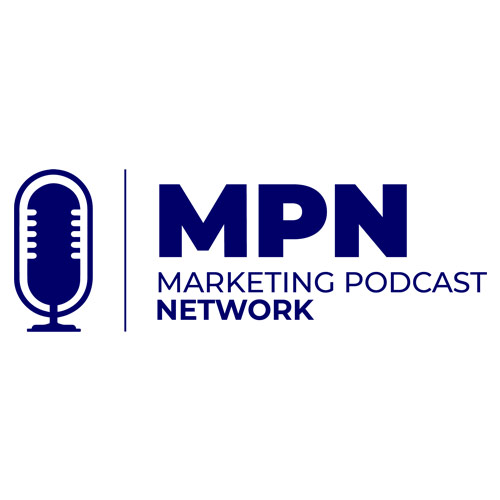
Share the goodness!
You’ve recorded your podcast episode, loaded it into your hosting provider and are ready to publish. But are you done? Not likely.
Here’s the Marketing Podcast Network‘s list of how to publish a podcast episode, including all the various promotions you’ll need to optimize your your show.
Make sure your podcast episode descriptive and categorization fields are complete.
Few people make the mistake of posting without a title and description, but how good are yours? And what other fields should be complete to ensure your episode has optimal discoverability?
These fields, or versions of them, should be found in every podcast hosting environment where you upload your MP3 files. Make sure you fill them out completely to ensure the episode is indexed properly both on your hosting provider, but also in your RSS feed, which fuels the various podcast subscription sites (Apple, Google, Spotify, etc.)
TITLE
You want your title to not just entice the listener to click “download” or “play” but also to be discoverable by people searching for the topic of the show. Be sure to include a keyword or two in there if you can. “Why can’t I get found?” is perhaps good for people, but “Why can’t my podcast rank well for podcast search results?” is far better for those searching for that topic.
In some providers, they have a “CLEAN TITLE” which should only be the title/headline for the episode (no episode numbers, sponsor names, etc.). They also provide an “EPISODE SUBTITLE.” This is what Apple Podcasts uses as a description and should be very concise, probably one sentence.
EPISODE SUMMARY
This is the elevator pitch to convince browsing listeners to hit “play.” You’ve got room here for a few paragraphs (depending on the host’s character limit) so tell people what the episode is about, sell them on the topic and guest, and make it hard for them to not want to miss listening.
Depending on the hosting provider, hyperlinks work here, so link to the guest’s website, your own website and perhaps any show sponsor website for added value and a better listener experience.
COVER ART
You CAN change your cover art for every episode just to make it unique, highlight the topic or guest, etc. If you don’t – and you don’t have to – your main cover art will accompany the episode. It’s optional, but can be a nice additional way for the episode to stand out.
EPISODE WEBSITE LINK
An optional field in most providers, an episode link allows you to associate each episode with a page on your website, like a show notes page. This fuels the link for more in the podcast players that can drive people to your website.
Publish Your Podcast Episode
Assuming your RSS feed is working and has been submitted to all the main directories, that’s all you have to do in order to distribute your new episode everywhere. However, many podcasters mistakenly think that establishing an account on Apple Podcasts is all you should do for distribution.
At MPN, we recommend opening an account and claiming your podcast on all the top podcast directories. Doing so ensures your show can be found where the lion’s share of podcast listeners listen. Leaving one out is simply walking away from potential listeners.
Fortunately, once you claim your podcast and set up your RSS feed with each, you don’t have to go back to those providers again for anything more than checking to see your show is importing properly.
Submit and Claim Your Podcasts on:
- Amazon Music – https://podcasters.amazon.com/
- Apple Podcasts – https://podcasters.apple.com/support/897-submit-a-show
- Google Podcasts – https://support.google.com/podcast-publishers/answer/9890138
- iHeartRadio – https://podcasters.iheart.com/
- Pandora – https://www.ampplaybook.com/podcasts
- Podcast Republic (Android/PC only) – https://www.podcastrepublic.net/for-podcast-publisher
- Podchaser – https://www.podchaser.com/claim
- Spotify – https://podcasters.spotify.com/submit
- Stitcher – https://partners.stitcher.com/join
- TuneIn – https://help.tunein.com/contact/add-podcast-S19TR3Sdf
Add Your Episode to YouTube as a Video
As of this writing, YouTube is working on an expanded feature for podcasts. Until they launch this, however, you need to take the extra step of publishing your podcast episodes on a YouTube channel or playlist.
As of early 2021, YouTube accounted for 13 percent of the share of ear among audio listening sources, despite the fact it’s a video-first format. Adding a YouTube channel specifically for your podcast audio, or adding a Playlist to your existing YouTube channel exclusively for your podcast episodes, puts your podcast there for listeners on the platform.
Plus, YouTube is the second largest search engine in the world (behind Google) so having your show there is a way to be discovered.
You will need to create a video file with the audio from your episode in order to do this. YouTube doesn’t (as of this writing) accept audio files only. A basic way to do this is to create a static image, perhaps a version of your show’s cover art, and create a video with it as the only visual in iMovie, Adobe Premier or similar.
But dynamic “static” video makers exist for this very purpose. We have used Wavve.co for this. There, you can upload an image, add a dynamic audio waveform that moves with the audio of your episode, and either upload your MP3 file or associate the video with a published podcast episode. This outputs an MP4 video file you can then upload to YouTube.
In fact, you can combine Wavve.co with Zapier to automatically turn your podcast episode into a YouTube video with every new update to your podcast feed. Check out Wavve CEO Jeff Dolan’s video on how to do that on YouTube.
NOTE: For those of you who use the audio from a live stream for your podcast, you can skip this step if you live stream to YouTube. The episode is already there. If you don’t live stream to YouTube, we recommend adding that, or following the steps to add your podcast to YouTube above.
Publish an Episode Page for Show Notes on Your Website or Blog
While this step is optional, it has multiple benefits for your show, your website and your business. Podcast listeners don’t naturally click on links or visit websites while they listen. However, many will go visit a show notes page after the fact to get links to the interesting things you shared. So, it’s a listener service, but much more.
Having a show notes page on your website gives you another piece of content for search engines to consume. In fact, many podcasters go the extra mile of having the audio of each episode transcribed in full and published as a website article. The more copy, the more the search engines have to index.
The podcast embed you place there is an additional piece of dynamic content that many search engines assign higher value to than pages of just text. This indexing in the search engines then gives your website an entry in the searches for the topic of the show. That means new audiences can discover your podcast and expertise who are just searching for the topic and don’t necessarily know about your podcast.
Plus, a website page offers you the opportunity to link out to the guest’s website or social profiles, any resources you mentioned in your episode, and certainly sponsor websites or promotions. The offer of a permalink on your site is an added value feature to potential sponsors who understand the value of inbound links for SEO purposes.
Finally, it serves your podcast up to the blog or website audience that may not necessarily be in tune with episodic audio content.
Promote Your Episode on Your Social Media Channels
When it comes to social media, if you build it, they will not come. If you build it, then promote it like crazy, they might. So you need to promote your new episode on your social media channels.
Twitter, LinkedIn, Facebook, Instagram, TikTok … you name it, if there’s an audience there that likes your content, then make sure they know about your podcast. You can use a simple method of posting the link to the podcast episode on Apple Podcasts or whatever your preferred platform is, along with some text explaining why people should listen to that episode. But you can also be more creative with your social promotions:
- Link to the show notes page on your website (where you’ve embedded the episode in a player) to drive website traffic and show notes consumption, too.
- Create a short audio snippet from an interesting portion of the episode to post as a piece of multimedia with your promotion and link. (Wavve.co can be used for short snippets, too.)
- Create custom episode promotional art to go along with your link and copy that shows the topic, the guest, the sponsors and other information that can be consumed visually.
- Provide easy links, audio clips and even your video promotions to the guests and sponsors of the episode an ask them to share it as well
- Ask friends or influencers in your vertical to share episodes that might be meaningful to them or their audiences.
We also recommend promoting each episode more than once on your channels, particularly on those social networks whose feeds are often experienced in non-linear fashion. Twitter, for example, is something most people experience as a snapshot. They see the latest 15-20 minutes of Tweets from their feeds, then log back in tomorrow where they’ve missed 24 ½ hours of content.
Queue up the promotion of your episode on the day it launches, but again perhaps a few days later, then maybe two weeks after that, then perhaps once a month for 2-3 months. The continued exposure of the episode will drive additional downloads.
Just be careful to not pummel your audience with the same promotions too often. Be smart and spread them out.
NOTE: Some networks like Instagram and Facebook aren’t ideal for repeat promotions. Give thought to how your audience sees the promotions, how often and how they might respond.
Advertise Your Episode (or Show)
While most podcasts don’t have a paid advertising budget to support promoting each episode, consider the occasional ad buy to get particularly interesting or strong episodes in front of more people. You can advertise your episodes in a variety of ways:
- Social media promoted posts
- YouTube advertising
- Promoted episodes
- Pre-Roll ads
- Google AdWords
- Podcast ad networks
- Spotify
- AudioGo
- Overcast
- Pocket Casts
- Podcast Addict
- Podbay
- Player FM
- Podnews (email newsletter)
Our favorite way to advertise a podcast, however, is to find similar podcasts and offer to buy or trade promotions. One of the perks of the Marketing Podcast Network is that members receive cross-promotion to other MPN member shows. If you’re not an MPN member, simply look for other podcasts with audiences and topics like yours, reach out to the host and offer to promote their show if they’ll do the same for you. With specific episodes, this type of outreach can be very effective if the topic is super interesting, timely and relevant for the podcaster in question.

